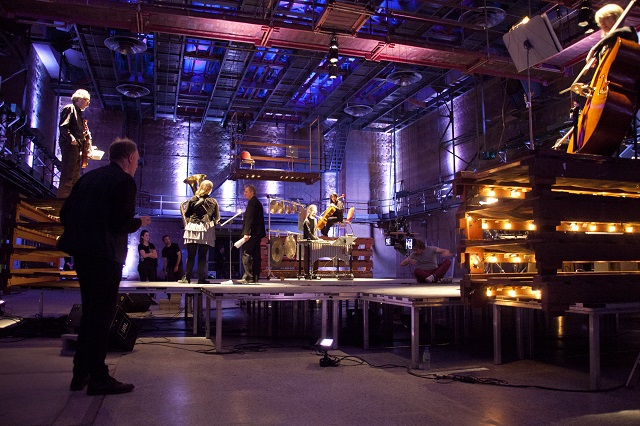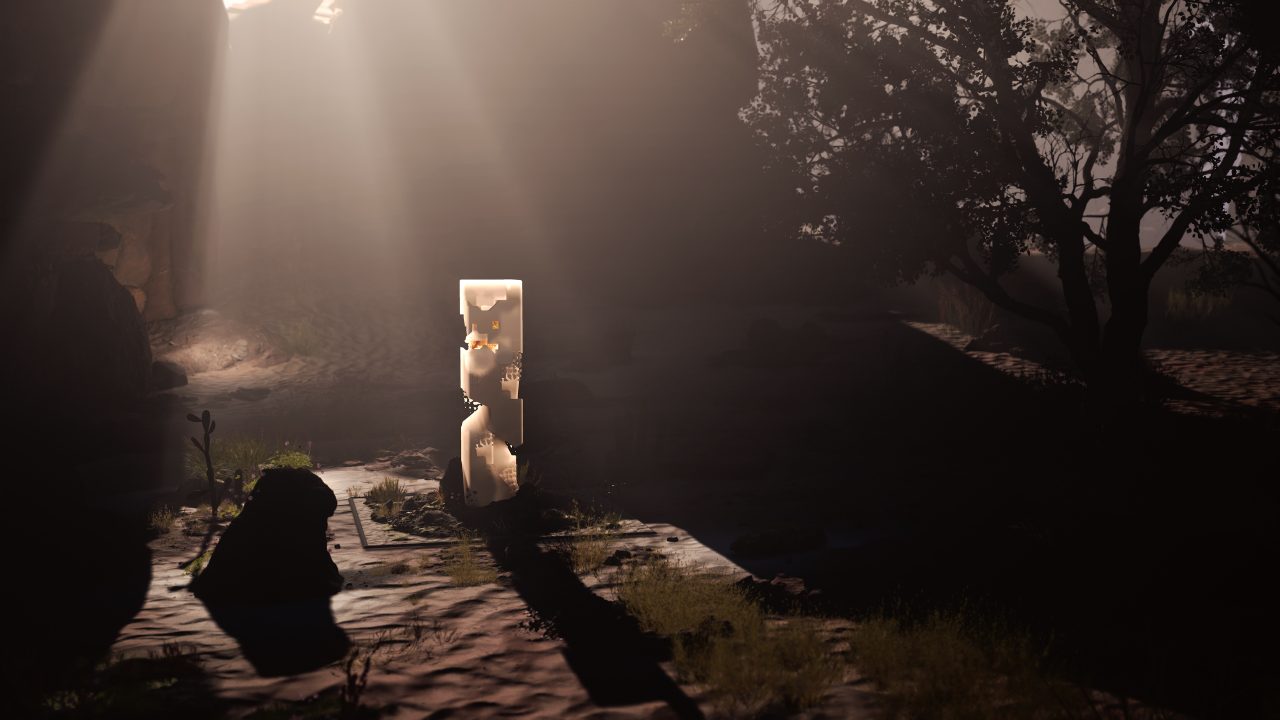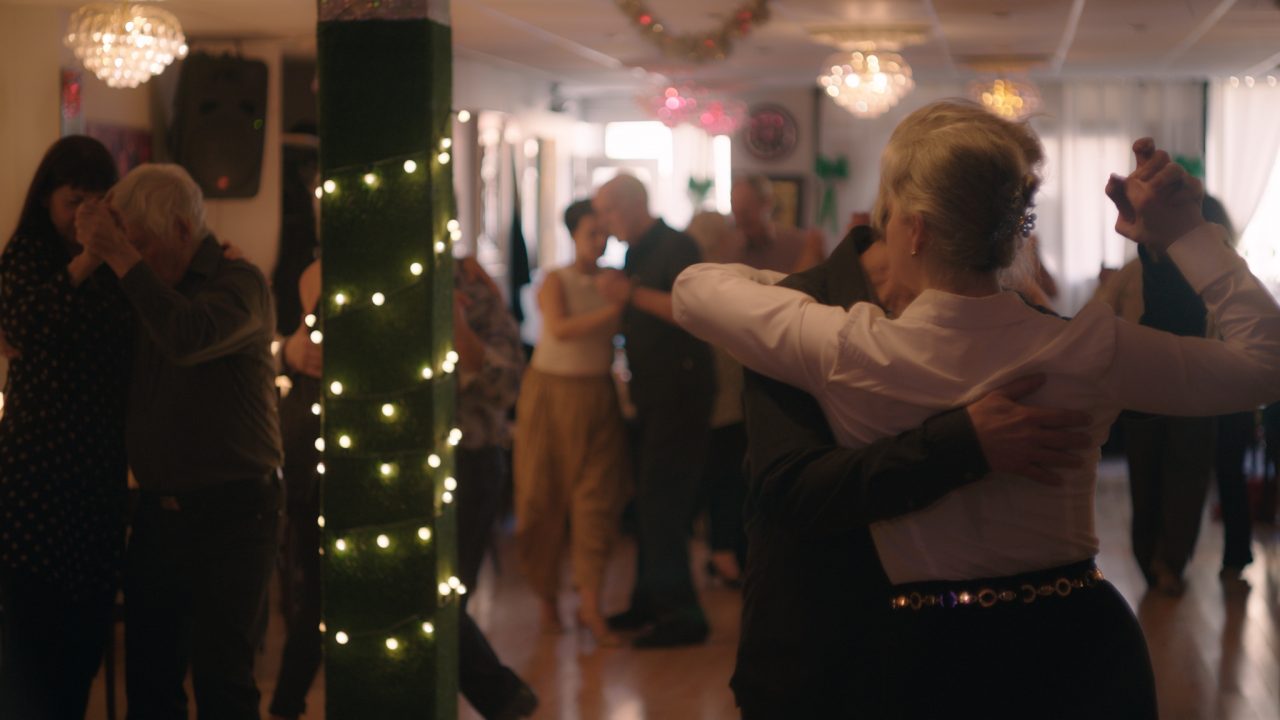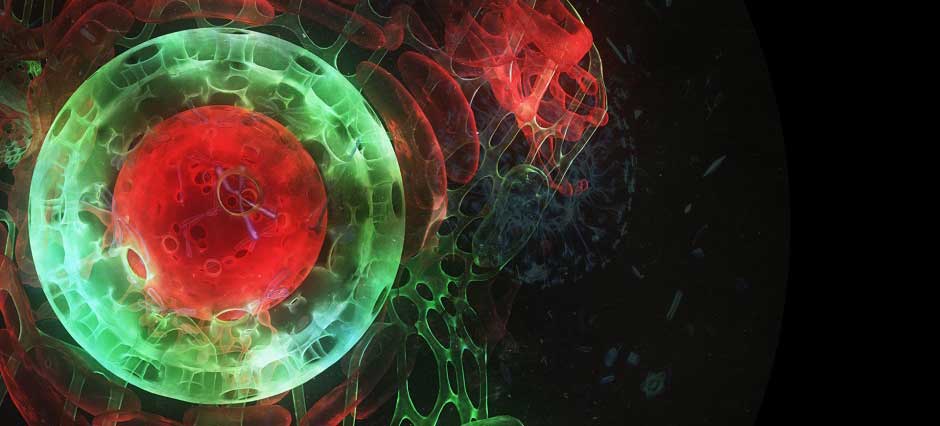
Kyma by Phillipe Baylaucq: Exploring the Waves in 360
Kyma by Phillipe Baylaucq: Exploring the Waves in 360
* This post by Marie Mello is a translation. Please find the French original here.
Distinguished filmmaker and regular contributor to the NFB, Philippe Baylaucq is currently completing his third film destined for the Montreal Planetarium: the immersive projection experience Kyma on a hemispherical screen.
In the following interview, the creator chats with us about the artistic and scientific approach behind the innovative work he’s currently finishing. He also discusses the new processes and technology used for Kyma, namely the Vantrix camera, developed in Quebec. A foretaste of what is to be experienced at the Planetarium this May, for the 375th anniversary of Montreal.
Interview with Philippe Baylaucq
It must be hard to imagine a work using new technologies and methods. What was the starting point for Kyma?
I had already produced Tempo and Aurorae for the Planetarium, which allowed me to develop a taste for the 360 dome format, but the white boards are always a bit dizzying! Unlike these two works, which relied on the presence of a live host, I wanted Kyma to be narrated only by image and sound. I also wanted the project to fit in well with the tradition of innovation at the NFB, where I have worked many times over the past 30 years. Norman McLaren is a great inspiration to me, and my work has always had a fairly experimental component.
People sometimes fear the term “experimental,” but I think that is the best way to describe the mandate I give myself as a director: taking the viewer where he has never gone and using the medium to open up worlds.
Is Kyma the result of a long process?
Unintentionally, Kyma completes a triptych Lodela (1996) and ORA (2011). These three works share the common idea of taking the narrative to a new form or a new way of storytelling. To create Lodela, I was among the first to put miniature cameras on dancers. Later, I pushed some ideas further with ORA, a 3D high-definition thermographic work. It was the world’s first film made solely from biological light. With Kyma, I chose to develop the 360 aspect, the immersion and the notion of writing in space. The editing and the rhythm are quite different, because we are writing a film that no one will see in the same way. It’s a fascinating language … and a bit risky! Kyma allowed me to bring the ideas from the other two films to fruittion but in a whole new context.

How is the Planetarium a special context for this type of work?
It is a place that welcomes people of all ages, who expect a fairly scientific experience. My mandate was to create a work of art—I wanted it to be poetic, with a level of allegorical reading—but it had to be inspired by an astronomical fact. I chose to address the wave phenomenon. How does it manifest itself in the universe and how does one show the invisible?
At the beginning of the script development process, I discovered a paper by Neil Turok, director of the Perimeter Institute in Waterloo, Ontario. He said that the largest and smallest forms that could be measured in the universe surprisingly had the same fairly simple structure, but that in the middle, that is to say the size of a human cell, is the messy middle, which I have translated as “bordélique milieu”. There, the forms are very rich and diverse, almost infinite.
By chance, two months later, I learned that the theme of Space for Life for the 375th was “Here’s to life!” The idea of making this journey from the infinitely great to the infinitely small, passing by the living and following a wave that changes shape, coincided perfectly.
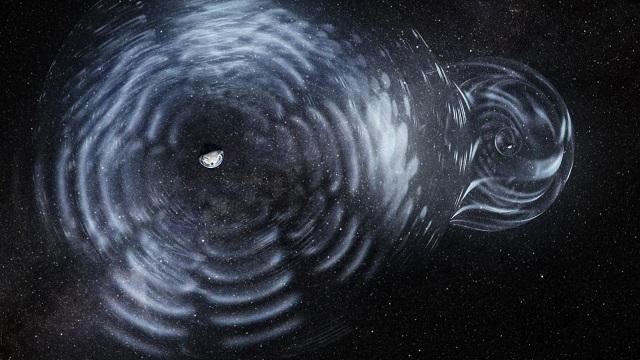
Once the idea is found, how do you determine which technologies are best for the project?
First, you surround yourself with a good team! I called on the expertise of Bruno Colpron, my “dome graphic artist”, Sindre Ulvik Péladeau, an immensely talented designer, and Isabelle Trudeau-Brunet, my assistant. The three had worked with me on Aurorae, so they had already got their feet wet in the world of 360. We gave ourselves the freedom to create a work that would cover a large spectrum, a mixture of filmed images and synthetic images, and we needed to develop several recording approaches.
We were the first to use the Vantrix camera from Quebec, which allows us to shoot directly in full dome format, without having to use five cameras oriented toward the north, south, east, west and zenith (above the head). Digital files are usually added and smoothed over to create a hemispherical image. The Vantrix captures the entire image with a specially created lens for a dome. It was really fantastic, and in very high definition!
What other experiments have been performed to represent the waves visually?
During the research phase, I came across the figures of Chladni, an 18th century German scientist recognized as the father of modern acoustics. He discovered that if sand was placed on a plate of glass and the glass was vibrated with a violin bow, the sand grains could be configured, by the atmospheric value of the vibrations, into rather beautiful drawings. Various researchers continued his wave visualization work. We continued in this direction by creating at the NFB a place entirely dedicated to the shooting of these figures which, in the show, become a leitmotiv to represent the waves. Without being “drawn”, this approach is a nod to animated film.
You are recognized for having done several works on dance and movement. Will the Kyma projection at the Planetarium be accompanied by performances by live artists?
René Chénier [a producer at the NFB, who has teamed with Baylaucq for a long time] and I were aware that a human presence was not the norm in dome shows. Since I also come from a documentary background, it is important for me that there are people in the work. Without there being dancing, there will still be choreography performed by two circus performers during the show, which is a link with the two previous works. There will also be musicians on screen.
What is the role of music and sound in Kyma?
The sound work was major and important for the structure. From the start, I worked with composer Robert Marcel Lepage and sound designer Benoît Dame. There was a lot of back and forth between sound and image; they have mutually influenced each other. I called on Lepage because he has mastered classical music forms, but he also has the freedom to improvise jazz. So, it was the right mixture of structure and flexibility. It uses mostly real instruments, which was important for the human presence in the film. We also hear and see a choir of 12 people.
What were the greatest challenges in the creation of Kyma?
With this type of project, the biggest problem is always the lack of time. As there is a great deal of research and experimentation, we open all sorts of doors and the work becomes a bit exhilarating! The possibilities are many and the biggest problem is to choose…and quickly, because time flies. We had no real glitches, but we had some pretty decent challenges. Working with Chadni’s shapes, creating a miniature forest…For one of the shots at the beginning of the film, a hemispherical template with two layers was created in which we put water to move the ink. This process enabled us to obtain rather unusual and absolutely astonishing images!
I am particularly pleased that we convinced the NFB to open a film set for us that had been closed for 10 years. We were the first production to come back to this venerable studio, which was the first soundproof set outside of Hollywood. With the NFB’s upcoming move to downtown Montreal, I decided to really highlight it and to illuminate it as such. It is magnificent and it holds a place of honour in Kyma.
